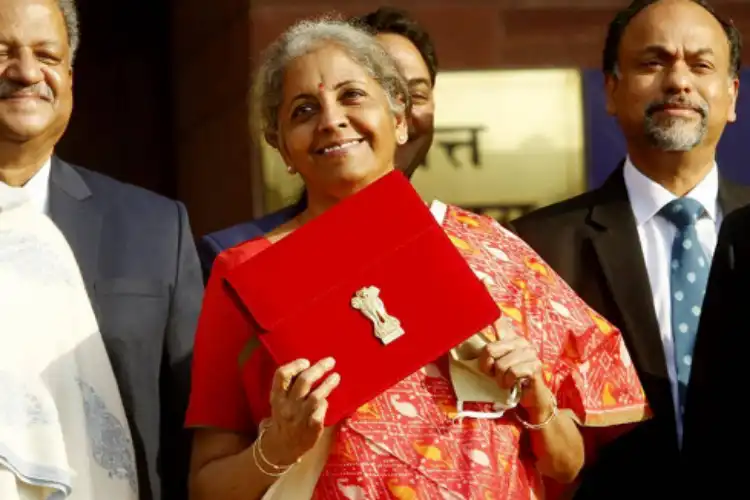 Sushma Ramachandran
Sushma Ramachandran
The annual budget statement is often described as a political document in this country. It is felt it reflects the ideological bent of the government of the day. Budgets over the years have been more reflective of global economic trends than individual political party ideologies. And it would be difficult to identify the ruling party from the budgetary provisions. For instance, though it was the Congress government in 1991 that catapulted the country from the license raj regime of the Nehruvian era, it was ultimately the NDA led by Atal Behari Vajpayee that made the next big push for economic reforms in 1999. Then again it was under Prime Minister, Dr Manmohan Singh that the UPA government presented a budget that proposed the retrospective tax that affected foreign investors and went against the trend of liberalization. And when Finance Minister Arun Jaitley presented the first budget of the Modi government, it was generally considered to be similar to that of his predecessor, P. Chidambaram.
Thus in terms of economic policy, there has been considerable overlapping though the political parties may have differing ideologies. This is mainly because there is now a broad consensus cutting across party lines, that the path of economic reforms outlined in 1991 by the Narasimha Rao government needs to be continued and the process of liberalization needs to be deepened so the country can achieve high growth rates consistently. Against this backdrop, it is no surprise that the current NDA regime has sought to accelerate economic reforms. It has gone a step further by trying to ensure that the ease of doing business is improved substantially both for domestic and foreign investors.
The economy, however, faced a serious setback during the Covid era. The 2020-21 financial year ended with an overall contraction in growth of the order of 7.4 percent owing to disruptions faced due to the pandemic. The outlook has improved in the current fiscal with many indicators showing the revival of trade and industry over the first three quarters (April to December 2021). As a result, despite the adverse impact of the second and third Covid waves, growth is still expected to be around 9 to 9.5 percent in the current fiscal. Even the latest assessment of the International Monetary Fund has downgraded growth in India only from 9.5 to 9 percent.
One of the reasons for the relatively upbeat projections for the year is the rapid recovery in many sectors. Most critical for the exchequer is the surprising buoyancy in revenues. Monthly GST (Goods and Service Tax) collections have been crossing the Rs. one lakh crore mark for the past six months. Direct tax revenues have also been more buoyant than expected, giving comfort to the Finance Ministry in the run-up to the budget. Similarly, other parameters like petroleum products consumption, rail freight earnings, and core sector industrial output have been encouraging.
At the same time, many challenges have to be considered by Finance Minister Nirmala Sitharaman while formulating the budget proposals for 2022-23. The most critical is inflation. With consumer prices rising by 5.6 percent in December 2021, the focus is largely on fuel as this is the biggest culprit. World oil prices have shot up to around 87 dollars per barrel of the benchmark Brent crude. This has led to retail prices in the country rising steeply over the past few months. In addition, both central and state taxes on oil products have put a rising burden on consumers.
The second issue that will be of concern is the need to push jobs growth as the unemployment rate has risen to a five-month high of 7.9 percent in December 2021. And finally, there is a need to provide support to the large segment of contact-intensive industries that have been adversely impacted by movement curbs imposed due to the pandemic. Most of these are small and medium enterprises that have been hit hard by the repeated closures of their units over the past two years.
On the inflation front, it would be a relief for consumers if there was a cut in the central excise duty on petroleum products. The duty had been raised at a time when world old prices were much lower and hence did not alter retail prices significantly. The difficulty in doing so right now, however, is that it may reduce the leeway to keep the fiscal deficit under control. But at a time when increasing demand and pushing growth is of paramount importance, the Finance Minister could allow the deficit to widen to meet the urgent need to revive the economy.
As far as jobs are concerned, the immediate need is to enhance expenditure on infrastructure while providing support to small and medium enterprises including the contact-intensive segment. Implementation of projects under the National Infrastructure Pipeline needs to be speeded up to give the much-needed impetus to jobs growth. Similarly, the revival of MSMEs will bring back much employment that had been lost due to disruptions created by the pandemic.
One of the areas highlighted last year was the expansion of export industries to rural areas. This process needs to be continued given that exports have been one of the bright spots in the economy over the past two years. The latest data for the April -December 2021 period shows a rise of 26.5 percent even compared to the pre-pandemic era in 2019. Besides, agricultural exports are booming and are expected to touch a record 50 billion dollars in the current fiscal.
There are high expectations from this year’s budget proposals, as these are expected to give a fillip to growth. On the plus side, it looks as if Covid infections in the third wave have peaked in most parts of the country, ensuring that movement curbs will be lifted gradually. Vaccinations have also covered about 70 percent of the population. The country thus needs to get back to normal economic and commercial activity as soon as possible to protect the livelihoods of millions. One can only hope that the budget proposals will give an impetus to this process.

 Sushma Ramachandran
Sushma Ramachandran